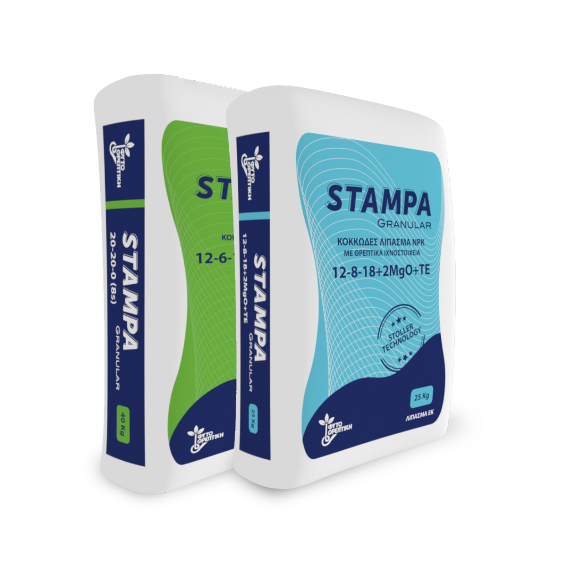
Wheat (Triticum ssp.) is the third most important cereal crop worldwide, constituting a staple food for 36% of the world’s population. Today, its area of cultivation exceeds that of any other crop. In order for wheat to be able to meet the needs of a growing population (growing at 1.15% per year), the projected demand for the year 2022 is 1 billion tonnes. The main reasons why wheat has a leading position in the world diet are its ability to provide more than 20% of the calories and proteins needed by humans, as well as its ease of transport and its ability to be stored for long periods of time. In Greece, durum wheat (Triticum ssp. durum) is currently grown on 3.450.000 stremmas of land, compared to soft wheat (Triticum ssp. aestivum L.), which is grown on 1.225.000 stremmas.
Basic fertilisation of winter cereals is now considered a well-established and quite critical cultural practice for their growth. It aims to accelerate the first growth, to speed up the development of the roots (better networking in the soil) and to strengthen the later tillering.
In basal fertilization, Nitrogen and Phosphorus work together, significantly favouring the early growth of wheat plants. Nitrogen, as an essential nutrient, determines characteristics such as tillering, the number of ears, the number of grains per ear and the protein content of the seeds (quality element). Phosphorus has an important influence on the strengthening of the root system and improving the resistance of plants to abiotic stress and lodging. At basal fertilisation, 1/2 or 1/3 of the total N requirements and the full amount of the required Phosphorus is applied.
Potassium, it is not necessary to include in the basal fertilization (most Greek soils are rich in potassium), unless deemed necessary through soil analysis and the local agronomist.
Thus, the appropriate choice of basic fertilization of wheat will ensure the most favourable conditions for the establishment of the crop, the increase of nutrient use efficiency (NUE), the enhancement of yield/quality and finally the increase of agricultural income.
Phytothreptiki is always in search of innovative fertilizers that incorporate new technologies and can provide solutions to modern problems of grain nutrition.

STAMPA innovative nutrition products are the result of Phytothreptiki’s cooperation with Stoller USA and are a combination of Stoller’s advanced technology and Phytothreptiki’s know-how and experience. The technological advantage in the granular fertilizers of the Stampa range is based on the incorporation of Stoller Technology Growth Regulators and the ability to target with completeness and precision, both in maintaining the hormonal balance of plants and in optimizing fertilization.
With the application of the granular fertilizers of the Stampa series, the following is achieved:
- Uniform germination of cereals without losses.
- Reduction of germination stress.
- Development of a healthy root system.
- Better tillering.
- Plants that are better able to withstand adverse winter weather conditions.
- Increased production.
- Improved quality characteristics.
The amount, type and timing of fertiliser application should always be followed according to the recommendations of the agricultular engineer. Because rational fertilisation is a function of many factors and interactions:
- Interpretation of soil analysis.
- Climate conditions.
- Soil type and fertility.
- Area.
- Cultivation techniques.

